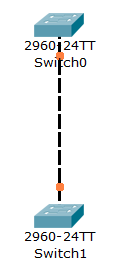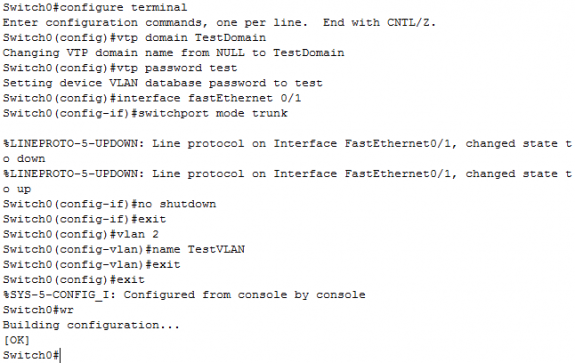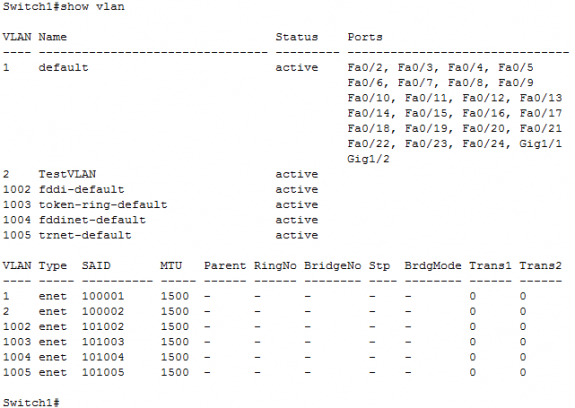VLAN Trunking Protocol (VTP) is a Cisco proprietary protocol that reduces administration in a switched network. When you configure a new VLAN on one VTP server, the VLAN is distributed through all switches in the domain. This prevents you from having to configure the same VLAN everywhere. The goal is to manage all configured VLANs across a switched internetwork and to maintain consistency.
Before I get into the lab, I have given a brief description of each of the three possible VTP modes below.
VTP Modes
Server Mode
There are three VTP modes a Cisco switch can be in: Server, Client, and Transparent. The default mode for Cisco switches is “Server”. At least one server has to be present in the VTP domain to propagate the VLAN information throughout the domain.
When you add, delete, or change a VLAN on a switch, the server switch where the changes are made increments the configuration revision and issues a summary advertisement. One or several subset advertisements follow the summary advertisement; this provides a list of VLAN information. If there are several VLANs, more than one subset advertisement can be required in order to advertise all the VLANs. The VLAN configuration information on a server is stored in NVRAM.
Client Mode
In client mode, switches receive information from VTP servers, but they also send and receive updates. They dffer from servers because a client cannot create, change, or delete VLANs. Additionally, none of the ports on a client switch can be added to a new VLAN until the VTP server notifies the client switch of the new VLAN.
Transparent Mode
Switches in transparent mode don’t participate in the VTP domain or share its VLAN database. However, they still forward VTP advertisements through any configured trunk links. They can create, modify, and delete VLANs because they keep their own database; this is kept hidden from the other switches. Although the configuration is kept in NVRAM, the VLAN database in transparent mode is only locally significant.
Tansparent mode allows remote switches to receive the VLAN database from a VTP server-configured switch through a switch that is not participating in the same VLAN assignments.
In this lab I use two Cisco WS-C2960-24TT [IOS 12.2(25)FX] switches to demonstrate how to setup VTP. The setup is shown below.
First, I setup Switch0 as a VTP server and set the domain name and password. Setting the password is optional but highly recommended. Since there must be a trunk link between the switches for VTP to work, I configure port FastEthernet 0/1 as a trunk port. I also create a new VLAN – VLAN 2.
Next, I setup Switch1 with the same domain name and password as Switch0. Interestingly, the domain name has already changed to “TestDomain” as the trunk link has been automatically negotiated between the switches; we’ll go ahead and confirm by setting the domain name and trunk interface anyway.
Now if you type the “show vlan” command on Switch1, you will see that VLAN 2 has automatically been created on Switch1 since we had created it on Switch0.







 Twitter
Twitter LinkedIn
LinkedIn Youtube
Youtube RSS
RSS